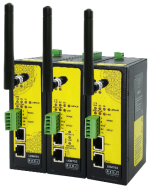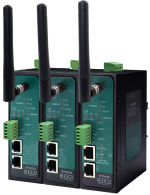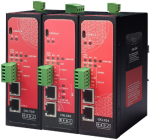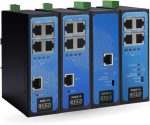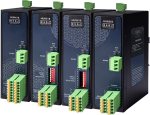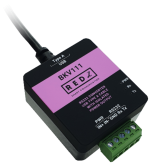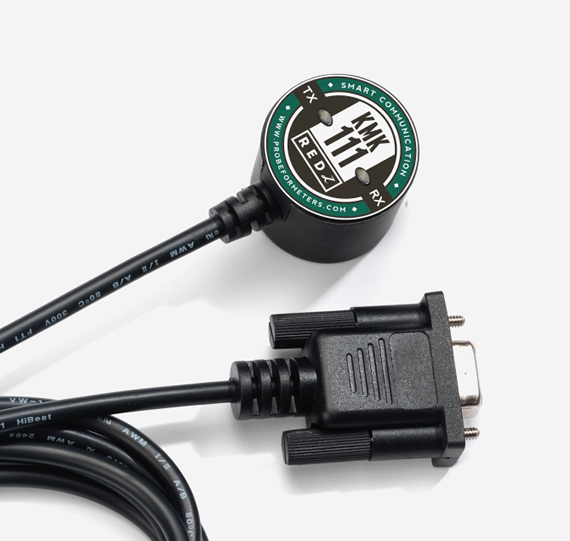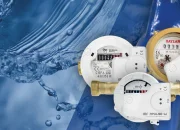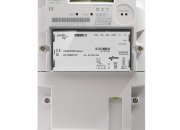1. Introduction
1.1 Overview of Wireless M-Bus Technology
In an era defined by connectivity and data-driven decision-making, the need for efficient and reliable metering solutions has never been greater. Enter Wireless M-Bus (Meter-Bus) technology, a versatile and robust platform designed to revolutionize remote meter reading and data communication in utility management systems. “Wireless M-Bus or Wireless Meter-Bus is the European standard (EN 13757-4) that specifies the communication between utility meters and data loggers, concentrators or smart meter gateways.” Wireless M-Bus offers a standardized approach to wirelessly transmitting meter data, enabling seamless integration into diverse utility infrastructures. In this text, we delve into the principles, applications, and benefits of Wireless M-Bus technology, exploring its significance in modern utility management and beyond. Join us as we unravel the wonders of Wireless M-Bus and discover how this innovative technology is reshaping the landscape of metering and data communication.
Reference : introduction-to-wireless-mbus.pdf (silabs.com)
1.2 Importance in Remote Metering and Data Communication
Remote metering and data communication play a crucial role in modern utility management systems, facilitating efficient monitoring, analysis, and control of utility consumption patterns. Wireless M-Bus technology emerges as a key enabler in this domain, offering a cost-effective and reliable solution for remote meter reading and data transmission. Traditional metering methods often rely on manual readings or wired communication infrastructure, which can be time-consuming, labor-intensive, and prone to errors. In contrast, Wireless M-Bus technology enables automated meter reading and real-time data collection wirelessly, regardless of the meter's location or environment. This capability not only streamlines utility operations but also empowers utilities with valuable insights into consumption trends, enabling proactive management and optimization of resources. Moreover, Wireless M-Bus facilitates seamless communication between meters and data collection devices, such as gateways or concentrators, ensuring efficient data retrieval and analysis. By enhancing the efficiency, accuracy, and scalability of remote metering and data communication, Wireless M-Bus technology plays a pivotal role in driving innovation and sustainability in utility management systems.
2. Understanding Wireless M-Bus Technology
2.1 Principles and Architecture
Wireless M-Bus technology operates on a robust and standardized communication protocol designed specifically for remote metering applications. At its core, Wireless M-Bus relies on radio frequency (RF) communication to transmit meter data wirelessly between utility meters and data collection devices. The architecture of a Wireless M-Bus network typically consists of three main components: meters, collectors, and repeaters. Meters, such as gas, water, heat, and electricity meters, are equipped with Wireless M-Bus modules that collect consumption data and transmit it over the airwaves. Collectors, also known as gateways or concentrators, serve as the central hub for collecting data from meters within their range. They receive and process meter data, then relay it to higher-level systems for analysis and billing purposes. Repeaters enhance the coverage and reliability of the network by relaying data between meters and collectors, especially in areas with poor signal reception.
2.2. Communication Modes and Configurations
Wireless M-Bus technology supports various communication modes and configurations to accommodate different metering requirements and network architectures. One of the primary communication modes is point-to-point, where individual meters communicate directly with a central collector or gateway. This mode is suitable for small-scale deployments or applications where meters are located within close proximity to collectors. Another common mode is point-to-multipoint, where multiple meters communicate with a single collector. Point-to-multipoint configuration allows for efficient data collection from multiple meters within a specified range, reducing the need for additional infrastructure and management overhead. Additionally, Wireless M-Bus networks can be deployed in mesh configurations, where meters communicate with each other and with collectors via neighboring nodes or repeaters. Mesh networks offer increased reliability and coverage, as data can be relayed through multiple paths, mitigating the impact of obstructions or signal interference.
3. Key Features and Benefits
3.1 Flexibility and Scalability
One of the key features of Wireless M-Bus technology is its inherent flexibility and scalability, which make it well-suited for a wide range of metering applications and network environments. Wireless M-Bus supports interoperability among different meter types and manufacturers, allowing utilities to deploy a mix of gas, water, heat, and electricity meters within the same network. This flexibility enables utilities to tailor their metering solutions to meet specific requirements and integrate seamlessly with existing infrastructure. Moreover, Wireless M-Bus networks are highly scalable, capable of accommodating thousands of meters across large geographical areas. As utility needs evolve and expand, Wireless M-Bus networks can easily grow to support additional meters and infrastructure, ensuring future-proof deployments.
3.2 Robustness and Reliability
Wireless M-Bus technology is renowned for its robustness and reliability, making it a preferred choice for mission-critical metering applications. One of the key factors contributing to its robustness is its error detection and correction mechanisms, which ensure data integrity even in challenging wireless environments. Wireless M-Bus employs forward error correction (FEC) and retransmission techniques to compensate for packet loss and signal interference, thereby minimizing the risk of data corruption or loss during transmission. Additionally, Wireless M-Bus devices are designed to operate in harsh environmental conditions, including extreme temperatures, humidity, and electromagnetic interference. This resilience ensures continuous operation and data transmission, even in demanding utility environments. Moreover, Wireless M-Bus offers adaptive data rate capabilities, allowing devices to dynamically adjust transmission parameters based on signal strength and network conditions.
3.3 Low-Power Operation and Long Battery Life
Wireless M-Bus technology is engineered for low-power operation, making it ideal for battery-powered devices such as utility meters. By employing efficient communication protocols and power management techniques, Wireless M-Bus devices minimize energy consumption while maintaining reliable communication performance. This low-power operation extends the battery life of metering devices, reducing the need for frequent battery replacements and minimizing maintenance costs. Moreover, Wireless M-Bus supports sleep modes and wake-up mechanisms, allowing devices to enter low-power states when not in use and wake up periodically to transmit or receive data. This approach further conserves energy and maximizes battery life, ensuring long-term reliability and sustainability in utility management systems.
4. Applications Across Industries
4.1 Utility Sector: Remote Meter Reading and Smart Metering
In the utility sector, Wireless M-Bus technology plays a pivotal role in revolutionizing remote meter reading and advancing smart metering initiatives. Traditional meter reading methods, which often rely on manual data collection or wired communication infrastructure, can be labor-intensive, time-consuming, and prone to errors. Wireless M-Bus technology streamlines this process by enabling automated and wireless meter data collection from remote locations. Utilities can remotely monitor consumption patterns, detect anomalies, and optimize resource allocation in real-time, leading to enhanced operational efficiency and cost savings. Moreover, Wireless M-Bus facilitates the deployment of smart meters, which provide consumers with detailed insights into their energy, water, or gas usage. By empowering consumers to make informed decisions about their consumption habits, smart metering promotes energy conservation and sustainability.
4.2 Municipal and Industrial Applications
Beyond the utility sector, Wireless M-Bus technology finds diverse applications in municipal and industrial environments, where efficient monitoring and management of resources are paramount. Municipalities utilize Wireless M-Bus for applications such as street lighting control, water distribution monitoring, and environmental sensing. By deploying Wireless M-Bus-enabled sensors and meters, municipalities can remotely monitor and manage infrastructure assets, optimize resource allocation, and enhance public services. In industrial settings, Wireless M-Bus technology is employed for process monitoring, equipment condition monitoring, and asset management. Industries leverage Wireless M-Bus to collect real-time data from sensors and meters installed in manufacturing facilities, warehouses, and logistics centers, enabling predictive maintenance, optimization of production processes, and efficient utilization of resources.
4.3 Building Automation and Environmental Monitoring
Wireless M-Bus technology plays a crucial role in building automation systems and environmental monitoring applications, enabling efficient management of building resources and ensuring occupant comfort and safety. In building automation, Wireless M-Bus facilitates the integration of sensors and actuators for monitoring and controlling various building systems, including HVAC (heating, ventilation, and air conditioning), lighting, and security. By wirelessly connecting these devices to a central management system, building operators can remotely monitor energy consumption, adjust environmental conditions based on occupancy patterns, and optimize building performance for energy efficiency. Furthermore, Wireless M-Bus enables environmental monitoring initiatives aimed at assessing air quality, detecting pollutants, and monitoring climate conditions in urban and industrial areas. By deploying Wireless M-Bus-enabled sensors across strategic locations, environmental agencies can collect real-time data on air quality, noise levels, and weather conditions, enabling timely interventions and informed decision-making to protect public health and the environment. The adoption of Wireless M-Bus technology in building automation and environmental monitoring underscores its versatility and effectiveness in promoting sustainability and enhancing quality of life.
5. Advantages of Wireless M-Bus Technology
Wireless M-Bus technology offers a multitude of advantages that make it a preferred choice for remote metering and data communication in utility management systems. One key advantage is its versatility, as Wireless M-Bus supports interoperability among different meter types and manufacturers, allowing for seamless integration into diverse utility infrastructures. Moreover, Wireless M-Bus networks are highly scalable, capable of accommodating thousands of meters across large geographical areas, ensuring future-proof deployments as utility needs evolve. Additionally, Wireless M-Bus devices are renowned for their robustness and reliability, with error detection and correction mechanisms ensuring data integrity even in challenging wireless environments. Furthermore, Wireless M-Bus technology is engineered for low-power operation, extending the battery life of metering devices and minimizing maintenance costs.
6. Challenges and Considerations
While Wireless M-Bus technology offers numerous advantages, it also faces several challenges and considerations that must be addressed for successful deployment and operation. One primary challenge is the potential for signal interference and range limitations, particularly in dense urban environments or industrial settings with high levels of electromagnetic interference. Additionally, compatibility and interoperability issues may arise, especially when integrating Wireless M-Bus devices from different manufacturers or deploying hybrid networks with other wireless communication technologies. Regulatory constraints and spectrum allocation policies may also pose challenges, as different regions may have varying regulations regarding radio frequency usage and power levels. Furthermore, the security of Wireless M-Bus networks is a critical consideration, as unauthorized access to metering data could compromise consumer privacy and utility operations. Addressing these challenges requires careful planning, coordination, and adherence to industry standards and best practices to ensure the robustness, reliability, and security of Wireless M-Bus deployments.
7. Conclusion
Wireless M-Bus technology stands as a cornerstone in the evolution of remote metering and data communication systems, offering a standardized and efficient platform for utility management in diverse environments. With its flexibility, scalability, and reliability, Wireless M-Bus enables utilities to streamline metering operations, optimize resource usage, and enhance service delivery to consumers. Despite facing challenges such as signal interference and regulatory constraints, ongoing advancements and collaborations within the industry continue to drive innovation and ensure the resilience of Wireless M-Bus deployments. As we look towards a future driven by smart technologies and interconnected ecosystems, Wireless M-Bus technology remains poised to play a pivotal role in shaping the landscape of utility management, promoting sustainability, and empowering communities worldwide.
REDZ Team


